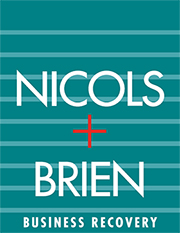
Services
In a perfect world our Only service would be the provision of advice and assistance at an early stage of insolvency problems to create real, practical and cost effective solutions for individuals or business’s facing financial stress.
In reality the following best summarises what we do:
| Business Recovery Solutions: | We work with the business owners, and their current advisers, to analyse and review the business operations to assess and create positive outcomes to resolve financial stress faced by a business. We can also assist sole traders or guarantors negotiate outside of a formal appointment |
| Corporate Insolvency: |
If the financial issues facing a company cannot be resolved through informal restructuring of the business then a more formal process may be relevant. If a negotiated position with creditors is required as part of recovery plan then a Voluntary Administration may be relevant.We also take appointments as Liquidators of companies either on a Voluntary (commenced by the owners of the company) or as Official Liquidators under a Court appointment which can be instigated by either the directors/shareholders of the company or a creditor endeavouring to recover their debt. a) Voluntary Administration and Deeds of Company Arrangement Voluntary Administration is a mechanism for a company in financial distress to obtain some breathing space from its creditors. The procedure comes from Part 5.3A of the Corporations Act 2001. The purpose of this Act is to allow the company to avoid Liquidation and to have the company Administered in such a way that maximises the chances of the company and its business continuing; or if it can’t continue, to allow a better return for the company’s creditors and shareholders than would result from the Liquidation of the company. A meeting of directors starts the process, and an Administrator is appointed. The first meeting of creditors is held within 5 days and a second meeting, to decide the company’s future, within 28 days. b) Voluntary Liquidation – Started by the directors and shareholders c) Official Liquidation – Which is started by a creditor which then leads to a Court Order If a company is in financial distress and it can’t trade out of its difficulties, and there is no scope for a Voluntary Administration, Liquidation of the company is an option. Most Liquidations are the first type. Regardless of how they start, both types follow the same pattern. To summarise, when a Liquidator is appointed, all the tangible assets are collected, valued, and then put to auction or sold by private treaty. The Liquidator begins an investigation into the affairs of the company. This may lead to further assets being realised. This may also lead to offences, if any, being reported to the Australian Securities & Investments Commission. Next the Liquidator draws up a list of creditors. Typically a creditors report and notice of meeting would then be sent out. Payment of dividends to creditors would then occur, assuming there are sufficient assets. During this process, the directors are required to assist the Liquidator in their duties. Any guarantees directors have signed would have to be dealt with by the directors personally, likewise any leased cars, etc. A set procedure is laid down by the Corporations Act 2001 as to how the “assets” are paid out to creditors. After costs, generally, the employees come first, then any “secured creditors”, like a bank, then trade creditors third. Some Liquidations become quite complex and may last for years, although most are finalised within 12 months. For “Voluntary Liquidations”, a final wrap-up meeting is held by the Liquidator to answer any final queries. |
| Personal Insolvency: |
Often the financial issues facing a sole trader, or personal guarantor, can be solved without a formal appointment. If not then we can act as Trustee’s under a Personal Insolvency Agreement or assist in undertaking a Small Debt Agreement. Both mechanisms provide for a formal structure within which a negotiated settlement of creditor claims can be formally undertaken. We also take appointments as Trustee in Bankruptcy. Further details concerning all formal options can be found at http://www.afsa.gov.au/ a) Part X and Personal Insolvency Agreements Part X refers to a group of Sections in the Bankruptcy Act, 1966. In short, it allows people to offer a proposal to their creditors to avoid bankruptcy.A meeting is held to discuss the proposal, facilitated & convened by a Registered Trustee, and a decision is achieved usually within 35 days. b) Debtor’s Petition Bankruptcy c) Creditor’s Petition Bankruptcy The words “bankruptcy”, “undischarged bankrupt”, “going bankrupt” and so on, all come from a Federal Act of Parliament called The Bankruptcy Act, 1966. This Act has been around the New South Wales and Australian Legal system since the 1880′s. So “going bust” is nothing new. In fact, over 20,876 people were declared bankrupt in Australia in the year ended 30 June 2012. The word “bankrupt” specifically relates to people, i.e. not companies. If your company is in trouble, The Bankruptcy Act, 1966, does not apply, but rather the Corporations Act 2001 does. Some important points are: you can lose your house; you can lose any shares you own; you have to contribute some income if your income is over and above approximately $63,000 per annum gross; you can lose your car if it’s worth more than $7,200.00; you have to hand in your passport; you can’t be a director of a company; but you do keep your superannuation! You can voluntarily declare yourself bankrupt, or wait for a creditor to do it via the Federal Court of Australia, or Federal Magistrates Court. Most people would try to avoid bankruptcy if possible. This can be achieved by doing a Part X deal with your creditors. |
For Statutory forms for the commencement of Corporate Insolvencies, see http://www.asic.gov.au/
For Statutory forms for the commencement of Personal Insolvencies, see http://www.afsa.gov.au/
Our Location
Contact Details
- Level 2, 350 Kent Street Sydney NSW Australia 2000
- PO Box Q191 QVB Post Shop Sydney NSW Australia 1230
- Phone: 02 9299 2289
- Fax: 02 9299 2239
- Email: mail@nicolsandbrien.com.au
- Level 2, 70 Market Street Wollongong NSW Australia 2500
- PO Box 5432 Wollongong 2520
- Phone: 02 4226 6025
- Fax: 02 4226 6360
- Email: wollongongmail@nicolsandbrien.com.au

